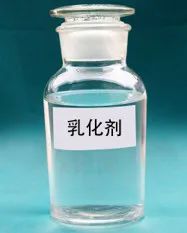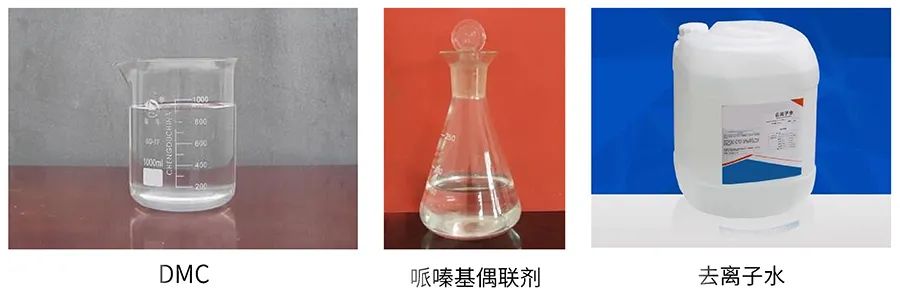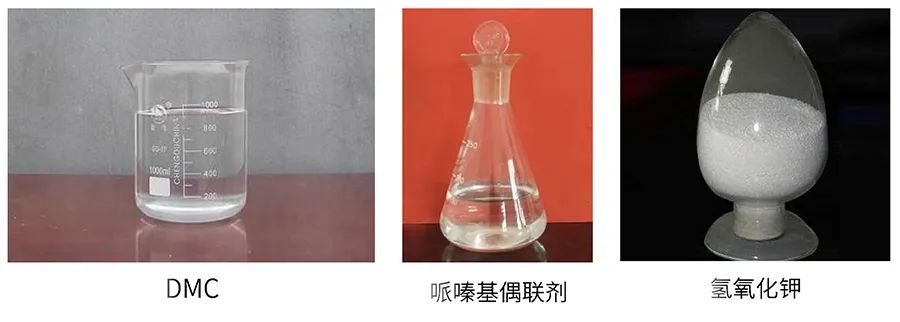1. Polyether
Polyether, as the main raw material, reacts with isocyanate to form urethane, which is the skeleton reaction of foam products. In the case of the same functionality, when the molecular weight increases, the tensile strength, elongation and resilience of the foam increase, and the reactivity of the same polyether decreases; in the case of the same equivalent value (molecular weight/functionality), the functional When the degree of polyurethane increases, the reaction will be relatively accelerated, the degree of cross-linking of the polyurethane produced will increase, the hardness of the foam will increase, and the elongation will decrease. The average shutdown energy of polyol should be above 2.5. If the average shutdown energy is too low, the foam will have poor recovery after being compressed.

If the amount of polyether is large, it is equivalent to reducing other raw materials (TDI, water, catalyst, etc.), which can easily cause cracking or collapse of foam products.
If the amount of polyether is small, the foam products will be hard, have reduced elasticity, and have a bad feel.
2. Foaming agent
Generally, when manufacturing polyurethane block foam with a density greater than 21, only water (chemical foaming agent) is used as the foaming agent, and low-boiling point compounds such as methylene chloride (MC) are used in low-density formulas or ultra-soft formulas. (Physical foaming agent) as auxiliary foaming agent.
The auxiliary foaming agent will reduce the density and hardness of the foam. Because its gasification absorbs part of the reaction heat, it will slow down the curing, and the amount of catalyst needs to be increased. Due to the absorption of heat, the danger of core burning is avoided. uc;,JX!bN
Foaming ability can be reflected by the foaming index (the number of water or water equivalents used for 100 parts of polyether): m—amount of foaming agent
Foaming index IF=m(water)+m(F-11)/10+m(MC.)/9(100 points polyether)
Water acts as a blowing agent and reacts with isocyanate to form urea bonds and release a large amount of CO2 and heat. It is a chain growth reaction.
With more water, the density of the foam decreases and the hardness increases. At the same time, the cell pillars become smaller and weaker, which reduces the load-bearing capacity and makes the foam prone to collapse and cracking. The amount of TDI consumed increases and heat is released, which can lead to heartburn. If the amount of water exceeds 5.0 parts, a physical foaming agent must be added to absorb part of the heat and avoid core burning.

The amount of water is small, the amount of catalyst is reduced accordingly, but the density increases “”F’
3. Toluene diisocyanate
Generally, soft foam uses TDI80/20, a mixture of 2, 4 and 2, 6 isomers. T100, which is pure 2,4TDI, can be prepared by cooling method.
TDI dosage = (8.68+m water × 9.67) × TDI index. The TDI index is generally 110-120.
As the isocyanate index increases within a certain range, the hardness of the foam increases, but after reaching a certain point, the hardness no longer increases significantly, while the tear strength, tensile strength and elongation decrease, and the foam forms large pores and closed cells. rises, the rebound rate decreases, the surface becomes sticky for a long time, and the aging time is long, causing core burning.
Low isocyanate index will cause foam cracks, poor resilience, poor strength, large compression permanent deformation, and a moist feeling on the surface.

4. Catalyst
Amine: A33 is generally used. Its function is to promote the reaction between isocyanate and water, adjust foam density, bubble opening rate, etc., mainly to promote the foaming reaction.
Polyamines: foam products appear to crack, and there are holes or bubbles in the foam
Less amine: The foam shrinks and closes the cells, resulting in a thick bottom of the foam product.
Tin: Generally, stannous octoate T-9 is used; T-19 is a gel reaction catalyst with high catalytic activity. It mainly promotes the gel reaction, that is, the later reaction.
More tin: rapid gelation, increased viscosity, poor resilience, poor air permeability, resulting in closed cells. If the dosage is increased appropriately, a good relaxed open-cell foam can be obtained. Further increasing the dosage will make the foam gradually become denser, resulting in shrinkage and closed cells.
Less tin: Insufficient gel, causing splitting during the foaming process. There are cracks on the edges or top, and there are peeling and burrs.

Reducing amine or increasing tin can increase the strength of the polymer bubble film wall when a large amount of gas occurs, thereby reducing hollowing or cracking.
Whether polyurethane foam has an ideal open-cell or closed-cell structure mainly depends on whether the gel reaction speed and gas expansion speed during the foam formation process are balanced. This balance can be achieved by adjusting the type and amount of tertiary amine catalysts and foam stabilizing and other additives in the formula.
5. Foam stabilizer (silicone oil)
Foam stabilizers are a type of surfactant that can make polyurea well dispersed in the foaming system, act as a “physical cross-linking point”, and can significantly increase the early viscosity of the foam mixture to avoid foam breakage. On the one hand, it has an emulsifying effect, which enhances the mutual solubility between the various components of the foam material. On the other hand, adding silicone surfactant can reduce the surface tension r of the liquid, and the free energy required for gas dispersion is reduced, making the dispersion more efficient. The air in the raw materials is more likely to nucleate during the mixing process, which helps to generate small bubbles, adjust the size of the foam pores, control the cell structure, and improve the foaming stability; prevent the cells from deflating and rupturing, and making the foam wall have a unique Flexibility, controls foam pore size and uniformity. It stabilizes the foam in the early stage of foaming, prevents the foam from coalescing in the middle stage of foaming, and connects the cells in the late stage of foaming. Generally, the more foaming agent and POP are used, the greater the amount of silicone oil.
More dosage: Increases the elasticity of the foam wall in the later stage, making it less likely to break and making the cells smaller. causing obturation.
Low dosage: the foam bursts and collapses after rising. The pores are larger and easy to merge.
6. Effect of temperature
The foaming reaction of polyurethane accelerates as the material temperature rises, which may cause core burn and fire hazards in sensitive formulations. Generally, the temperatures of the polyol and isocyanate components are controlled constant. During foaming, the foam density decreases and the material temperature increases accordingly. With the same formula and the same material temperature, the temperature in summer is high, and the reaction speed is accelerated, resulting in a decrease in foam density and hardness, an increase in elongation, and an increase in mechanical strength. In summer, the TDI index can be appropriately increased to correct the decrease in hardness.
7. Effect of air humidity
As the humidity increases, the isocyanate group in the foam reacts with the moisture in the air, causing the hardness to decrease. Therefore, the amount of TDI can be appropriately increased during foaming. If it is too large, the curing temperature will be too high and cause heartburn.
8. The influence of atmospheric pressure
The same formula is foamed at high altitudes, and the density of foam products is small.
Note:
1. During the formation process of foam plastics, gelation reaction and foaming reaction occur together, but each one
There is competition between reactions, and generally the foaming reaction speed is greater than the gel reaction speed.
Gel reaction—urethane formation reaction, (reaction with -OH)
Foaming reaction—refers to a reaction involving water to produce urea and bubbles
2. Nucleating agent—substances that cause bubble formation, such as fine solid particles and liquids in the system
Foam stabilizers or fine bubbles originally dissolved in materials; including fillers such as air or nitrogen, carbon dioxide, foam stabilizers, carbon black, etc. dissolved in polyols and isocyanates. However, the gas produces more bubbles in the material; the more stable and more bubbles are generated, the finer the cells.
The number of bubbles formed in the foaming system and the size of the cells in the foam plastic depend on the role of the external nucleating agent; the more nucleating agents, the more bubbles, and the smaller the cells.
As the temperature increases, the solubility of gases in liquids decreases, so more bubbles form or previous bubbles grow. The long milky time is conducive to the growth of large bubbles.
Increasing the amount of catalyst can shorten the milky whitening time, and fine-pore foam can be obtained due to the competitive reaction of gel reaction and bubble formation.
3. Whether the foam has an ideal open-cell or closed-cell structure mainly depends on whether the gel speed and gas expansion speed are balanced during the foam formation process. This balance can be achieved by adjusting the type and amount of additives such as tertiary amine catalysts and foam stabilizers in the formula.